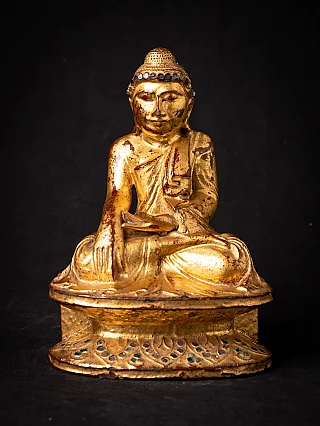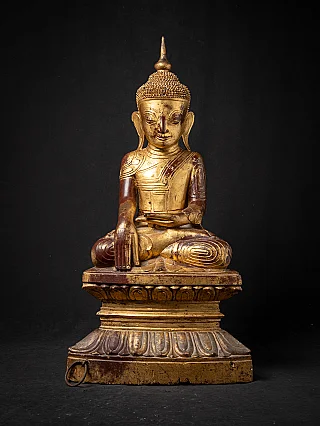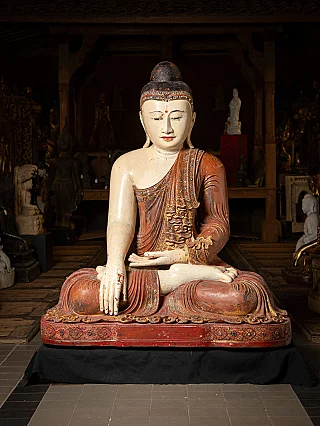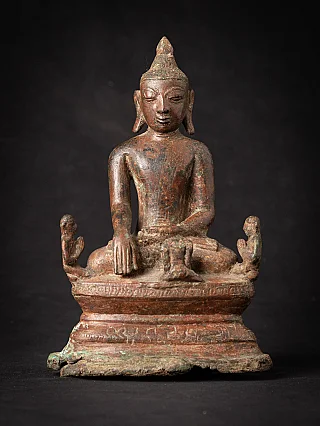Mudras: Buddhas hand positions
Author : Peter Vredeveld

View various mudra statues in our catalog
Mudra is a Sanskrit term for the seal, mark, or gesture, which is a symbolic gesture in the statues of the Hindu and Buddhist iconographies. Most Mudras are usually performed with hands and fingers, while some involve the entire body. Though the art styles, tradition, and structures of many Buddhist statues vary from one region or era of origin to another, the Mudras of these statues have remained pretty much the same over the years, so we should take these Mudras as the general guidelines of the spiritual gestures portrayed and taught by Lord Buddha himself.
A mudra is a gesture that is also an energetic seal used in the Buddha statues and spiritual practice of Dharma in Buddhism. The Mudras have been the center of curiosity for many enthusiasts of Buddha statues and Buddhism as they portray and depict Buddha with different hand positions. As we know, every position of the Buddha has its meaning, and these mudras certainly have their meanings. Similarly, in Hinduism and Tantrism, there are at most 108 mudras for the statues and the Tantric rituals, while the Buddhist statues are seen to be portraying only 4 to 5 mudras in general. Each Mudra has a peculiar effect on the practitioner of Buddhism, while common hand gestures are commonly seen in both Hindu and Buddhist iconography.
Here are the common Mudras used in Buddha statues:
Abhaya Mudra

The Abhaya Mudra, translated as the Mudra of no fear, symbolizes peace, benevolence, protection, and defeat of fear. In the Buddha statues, this Mudra is depicted with the right hand raised to shoulder height while the arm is bent, and the palm is facing outward with the fingers of the hand upright and joined to each other. The left hand of the statue is hanging down while standing. In the Buddha statues from Thailand and Laos, this Mudra is mainly associated with the walking Buddha. This Mudra is also seen when showing the action of preaching by the Buddha. The Abhaya mudra is also a symbol of goodwill and good intentions in the older beliefs than Buddhism.
Dharmachakra Mudra

The Dharmachakra mudra is known to have been used only by Gautam Buddha during a central moment of his life when he preached his first sermon in Sarnath after his enlightenment. This Mudra symbolizes the turning of the wheel of the Dharma. In Dharmachakra mudra, the two hands are closed together in front of the chest in Vitarka. The right is forward, while the left palm faces upwards and sometimes faces the chest. This Mudra is ubiquitous among Buddha statues all over South East Asia.
Dhyana Mudra

The gesture of meditation, Dhyana mudra, depicts the Buddha in the state of meditation while concentrating on Dharma and the Sangha for the Buddhist followers. In the Dhyana Mudra, the palms of both hands are seen resting on the lap and facing upwards. In this Mudra, the hands and fingers form a triangle shape, representing the Triratna's spiritual fire. This Mudra is generally used while depicting the Shakyamuni Buddha and the Amitabha Buddha statue.
Varada Mudra

Translated as the "favorable" Mudra, the Varada Mudra symbolizes charity, compassion, sincerity, welcome, giving, and offering. The Mudra is depicted with both of the hands of the Buddha at the waist level with palms out. The statue's right hand is up, while the left is down. The Varada mudra can also be depicted with the crooked arm and the palm offering slightly turned up. In case the arm is facing down, the palm of the statue is presented with the fingers of the palm facing upright and slightly bent. This variety of Mudra is widely used in the Buddha statues crafted from the Southeast Asian
Vitarka Mudra

The Mudra of discussion, the Vitarka mudra, is the Mudra or the gesture of discussion while the principles of Buddhism are being taught or preached. The Mudra is represented by joining the tips of the thumb and the index fingers together, and the other fingers are kept straight. This Mudra is similar to other mudras like Abhaya and Varada but with the thumbs touching the index fingers. This Mudra has many variants in various Mahayana Buddhist regions in eastern Asia.
Namaskara Mudra

Namaskara Mudra, as the name suggests, is the greeting mudra in Buddha statues and other Buddhist artifacts. Namaskara is a gesture used by many Asian countries as a gesture of greeting with the two palms joined together. Another name for the Namaskara Mudra is the Anjali Mudra. The joined hands are usually kept at the stomach or the thigh level. The joined palms face upwards with each of the fingers extended and the thumbs touching at the tips.
Bhumisparsha Mudra

The gesture of touching the earth, Bhumisparsha mudra, represents the moment of the Buddha's enlightenment. In this Mudra, the right-hand hangs over the right knee, with fingers pointing towards the ground, touching the earth.
Karana Mudra

Karana mudra is a gesture used to ward off negative energy and is often depicted with the fingers pointing upward. It is a protective mudra commonly seen in depictions of wrathful deities.
Conclusion
In conclusion, Mudras go beyond mere symbolic gestures within Hindu and Buddhist iconography; they are a profound visual language, encapsulating spiritual teachings and embodying the essence of enlightenment. Each Mudra, from the Abhaya Mudra conveying fearlessness to the Dharmachakra Mudra symbolizing the turning of the wheel of Dharma, carries specific meanings.
These diverse hand positions play a crucial role in meditation and spiritual practices, serving as a bridge to deeper layers of consciousness for practitioners. Whether expressing goodwill, facilitating meditation, embodying charity, or representing enlightenment, Mudras provide a tangible and powerful means to access and transmit spiritual wisdom. Through the art of these gestures, individuals engage in a transformative dialogue, fostering a profound connection with the rich teachings and enduring legacy of the Buddha.
Share this page






























